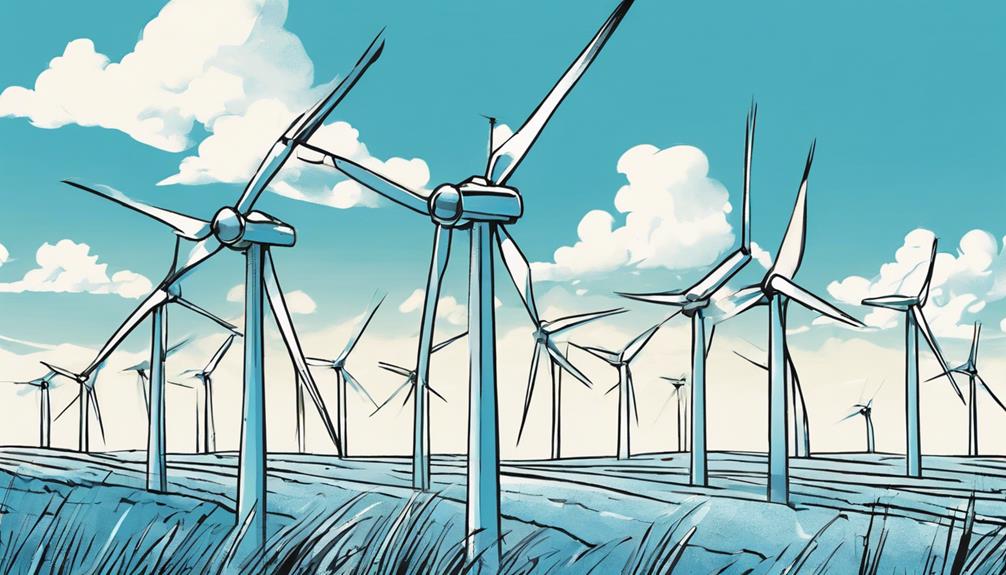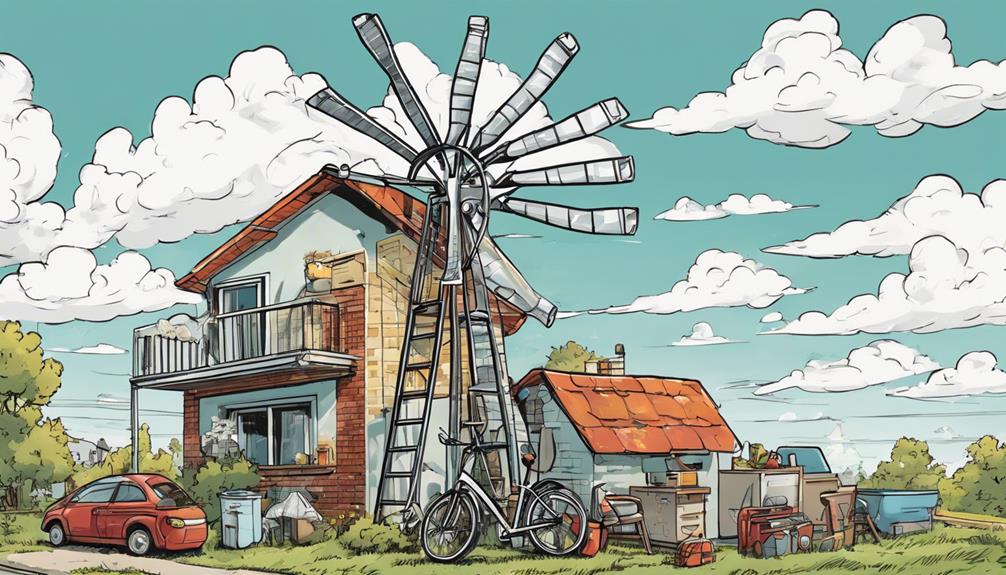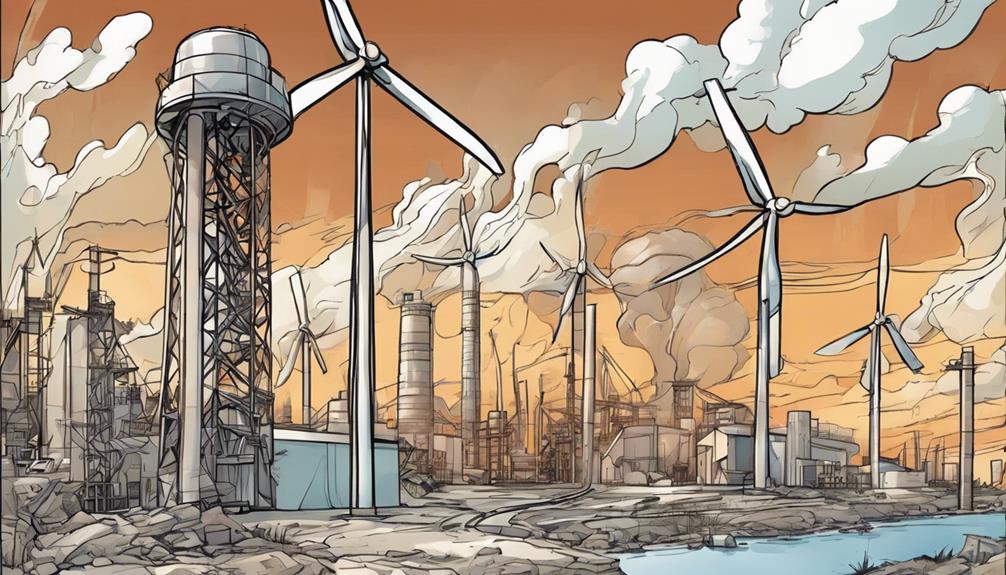Wind turbines convert kinetic energy from wind into electricity, with blades capturing energy, a shaft transmitting it to a generator, and a tower optimizing production. Fine-tuning component interactions and regular maintenance are essential for peak performance. Anemometers monitor wind speed, while inspections identify potential issues. Advances in blade design have increased efficiency. Despite challenges like intermittency, noise, and high costs, innovative solutions are emerging. With meticulous planning and execution, wind energy is poised to become a dominant global electricity source, driven by technological advancements and larger, more efficient turbines. As the industry continues to evolve, the benefits of wind energy are only expected to grow – and that's just the beginning.
Key Takeaways
- Optimizing turbine performance requires fine-tuning component interactions and regular maintenance to ensure maximum energy production.
- Advanced blade designs and materials enhance turbine efficiency, increasing energy output and reducing costs.
- Meticulous planning and execution of installation, as well as adherence to regulations, are crucial for maximizing benefits and minimizing drawbacks.
- Innovative energy storage solutions and advancements in technology are addressing intermittency concerns, driving down costs, and increasing efficiency.
- Larger, more efficient turbines and expansion of offshore wind farms will tap into stronger winds, increasing energy production and making wind energy a dominant global electricity source.
Wind Turbine Fundamentals Explained
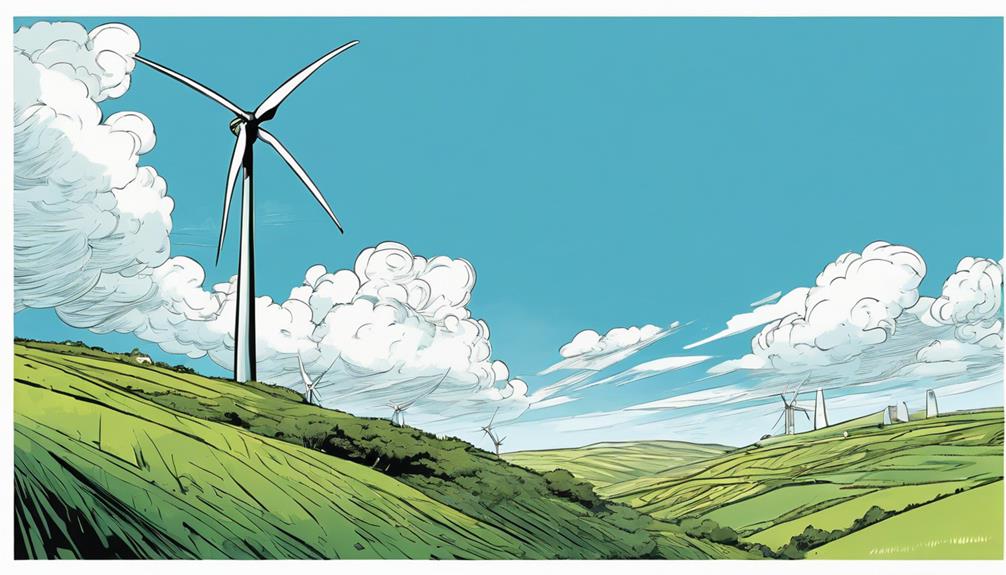
In the pursuit of harnessing wind energy, understanding the fundamentals of wind turbines is vital.
Wind turbines, comprising blades, a generator, shaft, and tower, convert kinetic energy from the wind into electricity through a meticulously engineered process that relies on precise component interactions.
The blades, typically between two to five in number, capture wind kinetic energy, which is then transmitted to the generator through the shaft.
The tower, supporting the turbine, optimizes energy production by elevating it above obstacles and turbulent airflow.
Advances in blade design and efficiency have greatly improved turbine performance, enabling the generation of clean, renewable energy.
A thorough grasp of these components and their interactions is essential for maximizing turbine benefits.
Optimizing Performance and Efficiency
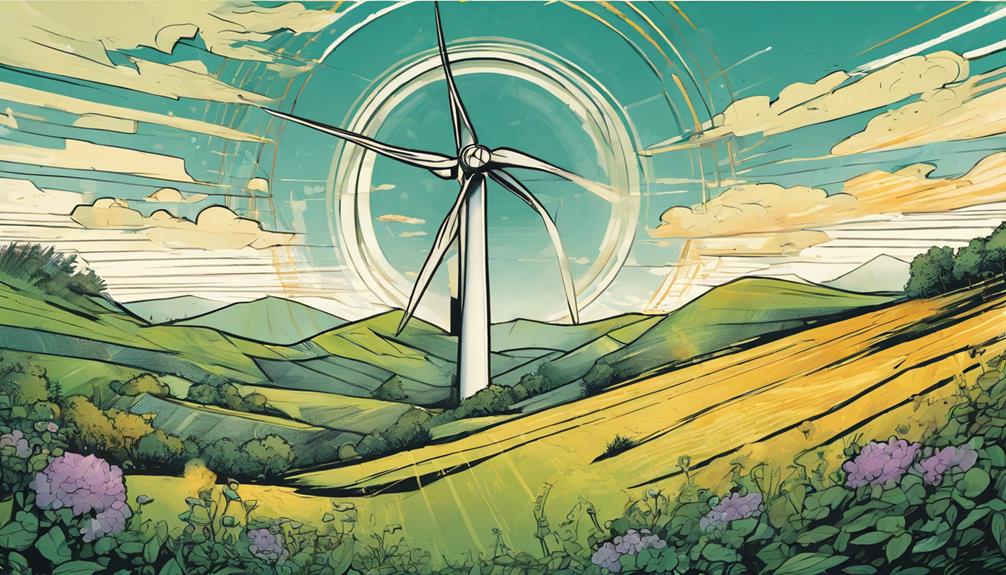
By fine-tuning component interactions and maintenance schedules, wind turbine operators can greatly enhance efficiency and energy production, building on the foundation of well-designed turbines.
Advances in blade design and materials have significantly improved turbine performance, but regular maintenance is essential to maximize output.
Anemometers monitor wind speed changes, allowing operators to adjust turbine settings for best energy generation.
Regular inspections identify potential issues before they become major problems, reducing downtime and repair costs.
Enhancing blade design and wind speeds also increases efficiency and extends turbine lifespan.
Overcoming Challenges and Limitations

Despite their many benefits, wind turbines still face several challenges and limitations that must be addressed to guarantee peak performance and widespread adoption.
One major hurdle is energy storage, as wind power is intermittent and can't be relied upon to meet constant demand.
Additionally, turbines can be noisy and visually unappealing, leading to resistance from local communities.
Furthermore, the high upfront costs of installation and maintenance can be prohibitive for some investors.
To overcome these obstacles, researchers are exploring innovative energy storage solutions, designing more aesthetically pleasing turbines, and developing more cost-effective maintenance strategies.
Installation and Regulatory Considerations

Wind turbine installation demands meticulous planning and execution, encompassing site selection, specialized equipment, and trained professionals to guarantee a successful and efficient setup. The cost of installation varies depending on turbine size, type, and location. Ongoing maintenance costs should also be taken into account in the overall investment.
Regulatory considerations are pivotal, with varying guidelines by location, including FAA rules near airports and liability insurance requirements. Adherence to regulations ensures safety, environmental protection, and eligibility for incentives. Understanding these factors is vital for maximizing turbine benefits and minimizing potential drawbacks.
The Future of Wind Energy Production

Technological advancements continue to propel wind energy production forward, driving down costs and increasing efficiency, paving the way for a sustainable future. As the industry evolves, wind turbines are becoming more efficient, reliable, and affordable. This trend is expected to continue, making wind energy an increasingly competitive option.
Increased adoption: Wind power is expected to become a dominant source of electricity globally, reducing greenhouse gas emissions and combatting climate change.
Advancements in storage: Improvements in energy storage technologies will enable wind energy to be stored and dispatched when needed, addressing intermittency concerns.
Larger turbines: The development of larger, more efficient turbines will increase energy production while reducing costs.
Offshore wind farms: The expansion of offshore wind farms will tap into stronger, more consistent winds, further increasing energy production.
Frequently Asked Questions
Can Wind Turbines Be Used to Power Individual Homes or Buildings?
Yes, wind turbines can power individual homes or buildings, especially in windy areas, providing a clean and renewable energy source. However, turbine size, installation costs, and local regulations must be considered.
How Do Wind Turbines Affect Local Wildlife and Ecosystems?
Like a delicate dance, wind turbines interact with local wildlife and ecosystems, posing potential threats to bird migrations and habitats, but responsible siting and monitoring can minimize these impacts, ensuring a harmonious coexistence.
Are There Noise Reduction Technologies Available for Wind Turbines?
They implement noise reduction technologies, such as sound-absorbing materials, optimized blade designs, and slow-rotating turbines, to minimize noise pollution and guarantee a more peaceful coexistence with surrounding environments.
Can Wind Turbines Be Recycled or Repurposed at the End of Their Life?
"By 2050, 43,000 wind turbines will reach end-of-life. Fortunately, yes, wind turbines can be recycled or repurposed, with some companies already developing innovative recycling methods to recover valuable materials like copper and steel."
How Does Wind Energy Compare to Other Forms of Renewable Energy?
She compares wind energy to other renewables, noting its advantages in scalability, cost-effectiveness, and widespread adoption, while solar and hydro power excel in specific regions, and geothermal energy remains niche.
What Measures Can Be Taken to Maximize Turbine Benefits While Minimizing Impact on Birds?
When considering the wind turbine impact on birds, implementing technology such as radar systems to detect bird movements can help minimize their impact. Additionally, carefully selecting turbine locations and adjusting the speed of the turbine blades during peak bird migration periods can further mitigate potential harm to bird populations.
Conclusion
As the world shifts towards a sustainable energy future, wind turbines stand poised to play a pivotal role. By understanding their components, optimizing performance, and addressing challenges, we can harness their full potential.
With careful installation and regulation, wind energy can reduce emissions, create jobs, and power communities.
As technology advances, wind turbines will continue to evolve, driving us closer to a cleaner, greener tomorrow, where energy is abundant, affordable, and environmentally conscious.
